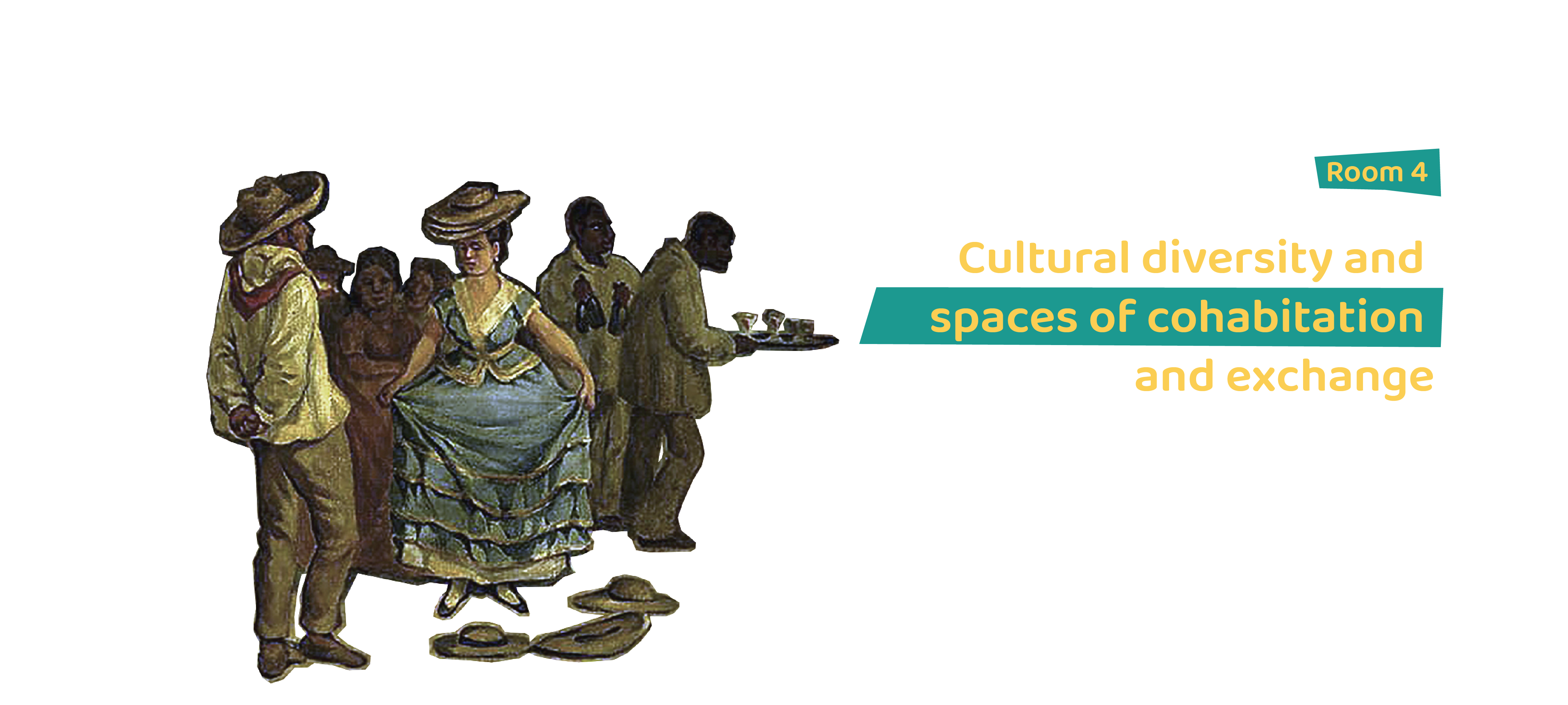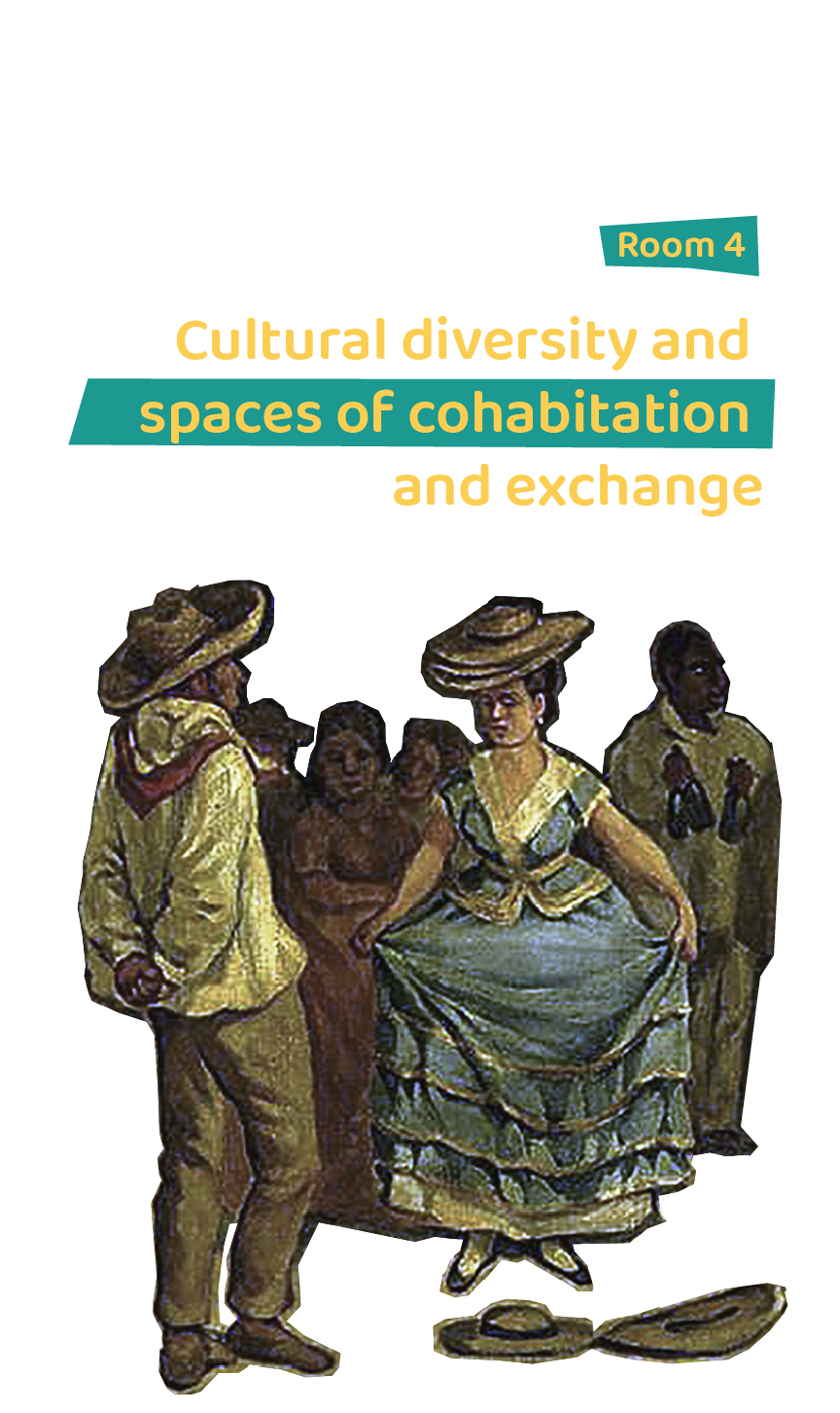



In the New Spain society there were enormous economic and social inequalities as well as class division between the privileged and the ones in desperate conditions. In cities, towns, ranches, haciendas and other spaces, people with different origins lived together: Wolofs, Mandinkas or Bantu along with Nahuas, Mixtecos or Mayans as well as Spaniards of different regions and Filipinos, Chinese and Indians. This made the Vice-Regal society one of the most diverse and complex ever to be known. Despite economic gaps and social prejudices, there were chances for Africans and, mainly, Afrodescendants to obtain their freedom and better living conditions. This was possible, among other reasons, because skin color and the biases towards slavery were still not insurmountable barriers for economic and social mobility. The aforementioned explains why, in the late 17th century, there were artists and artisans like painter Juan Correa, an artist who was esteemed by the society in his time. The “free mulato master painter” became foreman of his guild and painted the Metropolitan Cathedral sacristy along with Cristobal de Villalpando. There are records of Afrodescendant singers, architects, cowboys, traders and landowners who achieved prestige and were held in high regard by their peers during the Vice-Regal period.
The free Afrodscendants of the New Spain, known then, among other names, as negros, mulatos or pardos, searched for better life conditions through diverse means. One of those means was to join the Vice-Regal army or militia which were formed mainly during the 18th century. Said institutions awarded free Afrodescendants certain social standing, even occasionally letting them skip the payment of tribute, that is, taxes. These parties were mostly formed in the ports of Veracruz, Acapulco and Campeche in order to fight of the arrival of pirates and foreign invaders. Other free Afrodescendants chose to work as mule drivers, essential trade for the transportation of goods through the royal roads along with difficult access paths from the main cities to regions, haciendas and ranches. José María Morelos and Vicente Guerrero, leaders of the insurgent movement, were mule drivers. That fact allowed them to know the areas where later they would fight in for the Independence of the country. It is also known that several free Afrodescendants managed to reach economic conditions that granted them land, packs of mules, haciendas or stores.

Confraternities were social associations organized around devotion. To belong to them granted you certain social standing as well as some services and benefits. In exchange for the payment of quotas, fellowship members, male and female, would receive help from other members to organize masses, burials and prayers for their departed. It was also the responsibility of the fellowship to plan their patron saint’s festivities and to attend processions and other religious celebrations. Many people of African origins grouped together in confraternities period in Veracruz, Mexico City, Zacatecas and Parras among other places during the Vice-Regal. These spaces made possible the cohabitation of different groups and the transfer of knowledge and social practices along cultural recreation. Vice-Regal society also venerated two “black” saints who were very popular: Saint Iphigenia of Abyssinia and Benedict the Moor. Both came from Ethiopia, were christened and depicted in paintings and sculptures that can be observed in various churches, as well as private collections in Mexico City, San Miguel de Allende, Puebla, Oaxaca and Zacatecas among other cities.

Kitchens, street markets, processions, promenades or fandangos were favorable places for social gathering between different groups of the Vice-Regal society. In ports, cities, ranches or haciendas, Indigenous people, Africans and Spanish, as well as the descendants of their relationships, lived together and shared ways on how to think, cook, grow their faith or pray. By sharing and living together daily, the people of the New Spain created and recreated cultural manifestations in which one can distinguish the contributions from different regions of the African continent. Oral tradition, dexterity at cattle herding, ability for construction, painting and singing; all this, alongside cuisine, music and dance contributions are reflected in the building of forts, cathedrals or palaces; the use of hibiscus and tamarind; the words “chirundo”, “chamba” or “bamba”; names of places like Guinea, Mandinka or Mozambique; the cattle herding practices and in the artesa son, jarocho son or the tamborileros.
